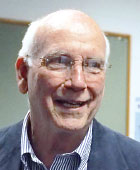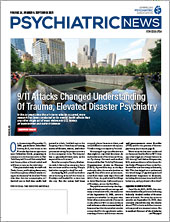In all of medicine, treatment specificity is an elusive, highly sought-after goal. Cancer treatment seeks to kill cancer cells without harming healthy ones, while in psychiatry, pharmacology attempts to home in selectively on specific receptors.
Today’s science shows how the precision of spoken words can give psychotherapy a special edge. In this article, I will look at Carl Rogers’ concept of accurate empathy, why precision is important, and how to achieve it.
Rogers long advocated reflecting back the therapist’s understanding, trying to capture the subtle nuances of the patient’s experience. His thinking was often misinterpreted as simply saying “I understand” or “Oh, you felt angry.” In his 1951 book, Client-Centered Therapy, he defined accurate empathy as “the listener’s effort to hear the other person deeply, accurately, and nonjudgmentally.”
Bruce Wampold, Ph.D., in an article published October 14, 2015, in World Psychiatry summarized the effect sizes of common factors in psychotherapy. Beside goal consensus and collaboration, empathy is the strongest factor, with an effect size of over 0.6 (0.5 is “medium,” and 0.8 is “large”). These findings fall short in one way: they don’t explain why.
Therapists have long identified an essential core experience in which the patient feels understood and is simultaneously exposed to the other’s perspective. Carl Rogers put it this way, “When I have been listened to and when I have been heard, I am able to re-perceive my world in a new way and to go on. It is astonishing how elements that seem insoluble become soluble when someone listens.” Marvin Goldfried, co-founder of the Society for the Exploration of Psychotherapy Integration, has compiled a list of equivalent terms: “reflective functioning,” “cognitive restructuring,” “observing ego,” “wise mind,” “self-observation,” “metacognition,” “decentering,” “witnessing,” “mindfulness,” and “insightful.”
But what is it about a patient, being in the grip of a threatening emotional experience, taking in the perspective of another person? Consider the prototype of a toddler after falling down. The first thing the child does, even before crying, is to make eye contact with the mother. Nonverbally, the child expresses alarm but also asks the meaning of what just happened. An understanding smile from the mother cements the magical juxtaposition of inner experience and outer perspective. This combination is at the core of psychotherapy as well as the universal means by which one human can bring soothing and flexibility to another throughout life.
Today, we have a neurophysiological explanation for how and why this experience is effective and specific. Memory reconsolidation, in which previously learned information can be updated, and extinction, in which learned responses can temporarily be suppressed, have been known clinically for some time. Only in the 21st century has the neurophysiology of the two mechanisms been worked out in detail. What is most remarkable for the clinician is that the required conditions for both mechanisms are essentially the same. In psychotherapy, those conditions are the following:
•
Evocation of a maladaptive response with affect (feeling + bodily changes). Affect is our clinical indicator that essential neurons in the limbic system, where responses are triggered, have been activated.
•
In temporal juxtaposition, exposure to new, surprising information, generating prediction error in relation to the old pattern of response.
In extinction, the cortex learns to inhibit the response with repetition of the triggering stimulus in the absence of the expected negative result. For memory reconsolidation, as elucidated in a paper by Sevil Duvarci, Ph.D., and Karim Nader, Ph.D., in the October 20, 2004, Journal of Neuroscience, the change is permanent and happens when prediction error renders stored information volatile and subject to updating. These are currently the only known mechanisms by which established threat response patterns can be modified.
The key ingredient for both mechanisms is vivid experiencing in which the exact group of neurons responsible for the maladaptive response is active while there is exposure to a new and surprising point of view.
Words are extraordinary in their ability to articulate, often metaphorically, the complexity of human experience. Helping our patients describe their experience with detail and subtlety leads automatically, unless inhibited, to empathic understanding. Our words, questions, and bodily expression reflect our understanding as well as a new perspective, creating conditions for either of the two change mechanisms. Research on memory reconsolidation has shown that the more vividly the old response is recalled, the stronger the effect of updating. The closer we are to accurate empathy, the stronger the activation of exactly the relevant neurons and the more profound the change.
This is the neurophysiology behind the scalpel-like precision that gives psychotherapy its specificity. Empathy is not just “being nice.” Derived from our evolution as social beings, it allows us to understand one another in a uniquely deep way. Reflecting back helps us know if we are on track, and curiosity tells us where we need to go further. Employed together, they help our patients explore ever deeper layers of meaning. As we do this, old responses are activated with increasing intensity and precision, while a novel context of safety unfolds.
Perhaps the best conclusion is another quote by Rogers: “Over the years … the research evidence keeps piling up, and it points strongly to the conclusion that a high degree of empathy in a relationship is certainly one of the most potent factors in bringing about change and learning.” ■
“How Important Are the Common Factors in Psychotherapy? An Update” by Bruce Wampold, M.D., is posted
here.
“Characterization of Fear Memory Reconsolidation” by Sevil Duvarci, Ph.D., and Karim Nader, Ph.D., is posted
here.

